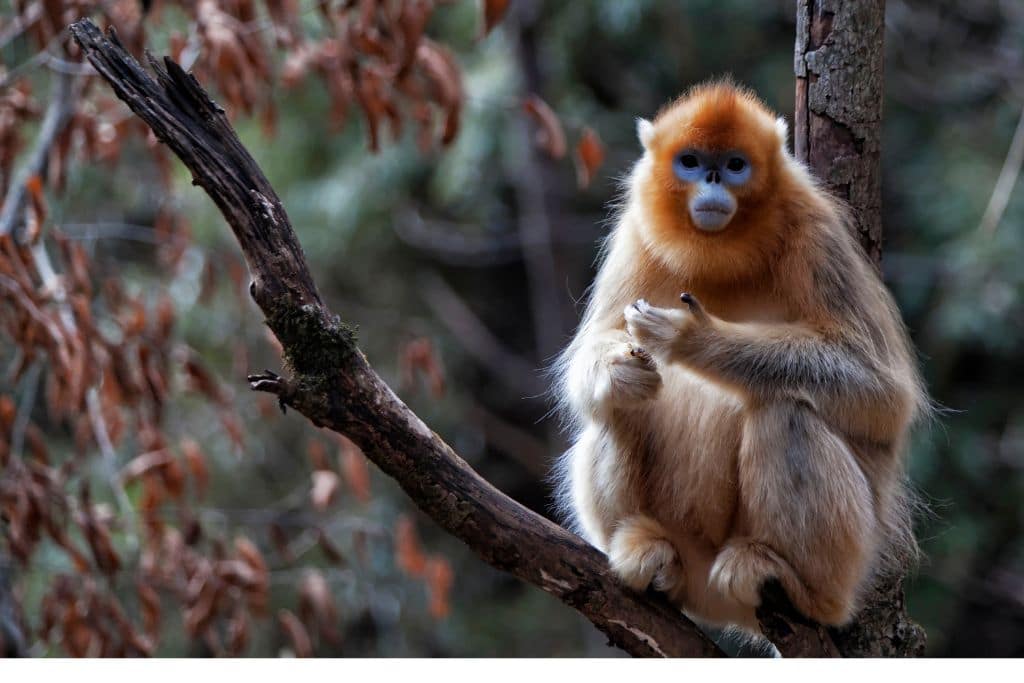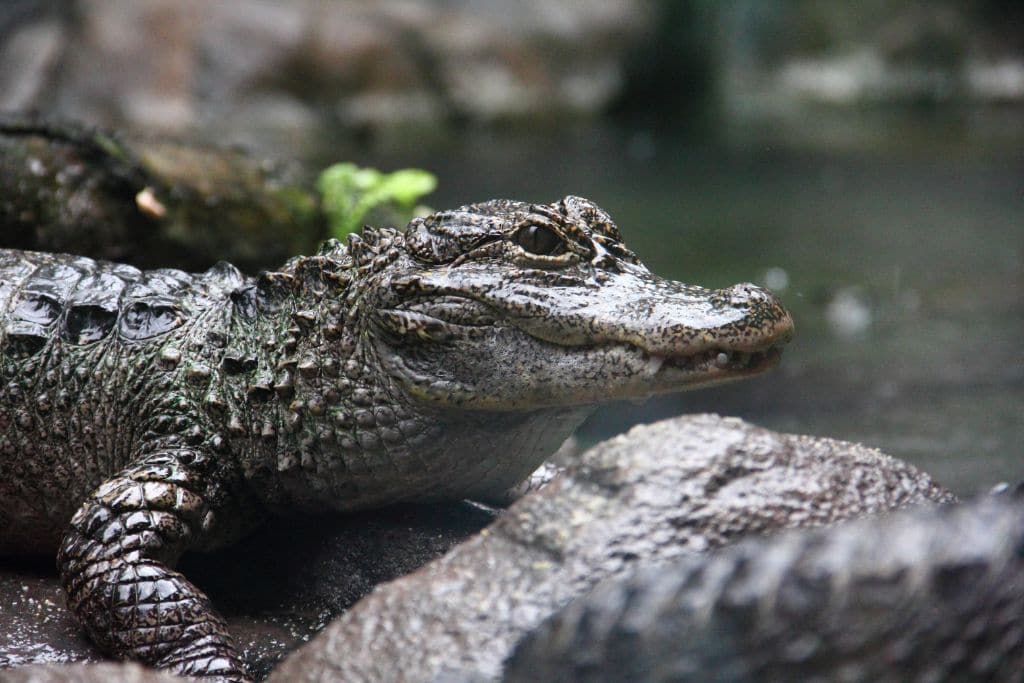Why Do Chinese Continue Endangered Species
10 of the Most Endangered Species in China

Hundreds of species in China appear on the Red List of Threatened Species of the International Union for Conservation of Nature (IUCN) and many of them are classified as critically endangered. As one of the world's 17 mega-diverse countries, with varied environments ranging from desert to tropical forests , China has over 34,000 known species of animals and plants, making it the third-most biodiverse country on the planet. However, decades of economic development – which led to a significant rise in air and water pollution, coupled with increasingly frequent extreme weather events caused by climate change, have pushed hundreds of animals and plants to the edge of extinction. Here are 10 of the most endangered species in China.
—
10 Endangered Species in China
1. Golden Snub-Nosed Monkey
First on our list of endangered species in China is the rare golden snub-nosed monkey, a unique species found exclusively in China, particularly in the provinces of Gansu, Hubei, Shanxi, and Sichuan. The body of golden monkeys is about 70 centimetres long, however, their tail alone can sometimes be even longer than that. This type of monkey is named after the stump nose with forward-facing nostrils.
With an estimated population of 3,000 individuals , golden monkeys are classified as endangered by the IUCN. Among the main threats are urban and agricultural development as well as hunting and poaching. Considered some of the rarest and most precious species in the world, snub-nosed monkeys are under the state's first-class protection. A dozen government agencies and independent organisations established programmes that aim to protect this species, such as the Yunnan Golden Monkey Protection Network . A 2020 survey has also shown that the number of wild golden snub-nosed monkeys in Hubei is slowly growing.
2. South China Tiger
South China tiger – also named Chinese Tiger or Xiamen Tiger – is one of the smallest tiger subspecies. Native to the forests of central and southern China, it is considered the most critically endangered tiger by the IUCN due to poaching, loss of habitat, and human-tiger conflicts. In China, just about a dozen of these tigers remain in the wild today, while less than 100 are held in captivity, distributed in over zoos across the country, including Shanghai Wild Animal Park and Guangzhou Zoo.

Like golden monkeys, South China tigers are under the State's first-class protection. The non-governmental organisation Save China's Tigers , with support of China's State Forestry Administration, has developed a plan to reintroduce captive-born individuals into large enclosures in southern China.
You Might Also Like: Over 20 000km of New Roads Will Be Built in Tiger Habitats by 2050 – Study
3. Chinese Sturgeon
The Chinese sturgeon is one of the oldest species of fish whose earliest fossils date back to the Cretaceous period. Initially found in China, Japan, and the Korean Peninsula, it has disappeared from most regions and is now among the species most at risk in the country. The fish, which can grow up to 5 meters (16.4 feet) in length and weigh between 200 to 500 kilogrammes (440 to 1,100 pounds) – making it the largest sturgeon in the world – is classified as 'national treasure' and is strictly protected by the Chinese government. The main threats are habitat loss and overfishing, however, the sturgeon is also highly sensitive to noise – especially the one caused by growing river traffic, and is vulnerable to death or injury by boat propellers.
4. Chinese Giant Salamanders
The name is no coincidence. Chinese giant salamanders are one of the largest amphibians in the world. Their bodies can grow to nearly 2 metres (6 feet) and they can weigh up to 70 kilogrammes (154 pounds). Chinese giant salamanders are critically endangered due to habitat loss, pollution, and overcollection. Furthermore, these animals are considered a delicacy and used in traditional Chinese medicine . Besides being protected under Chinese law and the Convention on International Trade in Endangered Species of Wild Fauna and Flora ( CITES ) – a multilateral treaty to protect endangered plants and animals – many natural reservations were created for the conservation of this rare species. Nevertheless, the population has dropped by more than 80% since the 1950s.
5. Asian Elephant
Classified as the continent's largest terrestrial mammal, Asian tigers can reach more than 6 metres (20 feet) in length and weigh approximately 500 kilogrammes (1,100 pounds). The species inhabits forests and grassland in the Indian subcontinent and Southeast Asia, from India in the west, Nepal in the north, Sumatra in the south, and Borneo in the east . In China, it survives only in the prefectures of Xishuangbanna, Simao, and Lincang of southern Yunnan.
For decades, the overall population trend has been downwards, leading the IUCN to classify this animal as endangered. In 2020, the estimated population in China was around 300 individual. Given the extremely low number of elephants in the wild, these animals ar e under first-level protection and several national and regional reserves have been established to protect them.
6. Black Crested Gibbon
The black crested gibbon is a critically endangered species found in China, Laos, and northern Vietnam. The fastest non-flying arboreal mammals, gibbons can reach speeds of 58 kilometres/hour (35 miles/hour), and up to 61 metres (200 feet) above the forest floor. To put that into perspective, Usain Bolt's record-breaking sprint clocked in at just 38 kmh (23mph).
On International Gibbon Day 2020, IUCN Save Our Species announced a new Gibbon conservation initiative to save the four Critically Endangered and Endangered species. The number of individuals found in the wild is constantly dropping, mainly because of poaching. Indeed, gibbon bones are commonly used in traditional medicine as 'monkey bone balm' or tonic additives. Another major threat is habitat loss as a result of urban expansion and land conversion, mostly for agriculture.
You Might Also Like: Saving the Critically Endangered Gibbons
7. Wild Bactrian Camel
The wild Bactrian camel is a critically endangered species of camel, living in parts of northwestern China and southwestern Mongolia. Contrarily to their Arabian relatives, which have one hump, this species has two. The fat stored in the humps can be converted to water and energy when sustenance is not available, giving camels their legendary ability to endure long periods of travel without water , even in harsh desert conditions.
In 2002, the wild Bactrian camel was added to the list of critically endangered species by the International Union for the Conservation of Nature (IUCN), a move that prompted Chinese officials to roll out plans to restore the animal's population over the next few years. Conservation programmes have proved fairly successful, with the number of individuals growing gradually in recent years, increasing from around 600 in 2004 to about 700 currently .
8. White-shouldered Ibis
The bird owes its name to the white neck and chin. They also have a white patch on their wings, which is visible only when the wings are closed. Native to small regions of Southeast Asia, the white-shouldered ibis is considered to be one of the most endangered bird species of this part of the continent, threatened by hunting and egg collecting for human consumption, as well as development of infrastructure such as dams. Indeed, while in the past this animal could be found in Myanmar, Thailand, Malaysia, Cambodia, Laos, Vietnam and southern China, the current population is very small and its distribution highly fragmented, with nearly 90% of the population believed to live in Cambodia. In Thailand, Myanmar, and southern China, the white-shouldered ibis is now functionally extinct.
9. Sumatra Rhinoceros
Sumatran rhinos – the only Asian rhinos with two horns – are the smallest of all living species. Along with the Javan rhino, they are the most endangered rhino species in the world, threatened mainly by habitat loss and fragmentation. The remaining animals survive in small, fragmented non-viable populations, and with limited possibilities to find each other to breed, its population decline continues. According to the World Wildlife Fund , just two captive females have reproduced in the last 15 years. Originally found in the Eastern Himalayas in Bhutan, eastern India, as well as in Myanmar, Thailand, Vietnam and China, today, the species only survives on the Indonesian islands of Sumatra and Borneo. The nation has so far developed a network of Sumatran Rhino Sanctuaries in a bid to help prevent the global population of this species from going extinct in the wild.
You Might Also Like: Development of the Third Sumatran Rhino Sanctuary Advances to Save Species
10. Chinese Alligator
Last on our list of endangered species in China is the Chinese alligator, also known as the Yangtze alligator. The animal, which can reach a length of nearly 2 metres (6.6 feet) and a total weight of about 40 kilogrammes (88 pounds), is considered the most endangered species in the crocodilian family with only about 120 individuals estimated to be left in the wild.

The drastic decrease in population is mainly due to extreme habitat fragmentation and loss as well as food contamination by fertiliser and pesticide used for agriculture. Endemic to East China, the animal is ranked as critically endangered on the IUCN Red List and the government recognises it as a Class I Endangered Species.
You might also like: 5 Worrisome Environmental Issues in China
3307
Source: https://earth.org/10-of-the-most-endangered-species-in-china/

0 Response to "Why Do Chinese Continue Endangered Species"
Post a Comment